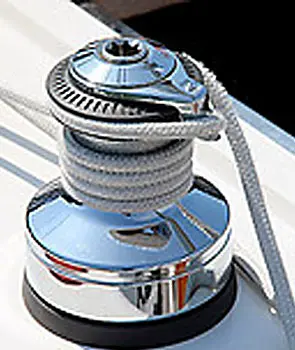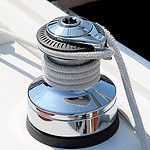


 If you are doing a yacht charter in Thailand or anywhere else in the world come to that, then there are certain knots that all sailors should know! On your yacht charter in Thailand, you may have a skipper on board with your for the duration of your holiday, but he may well ask you to perform a few simple tasks, such as throwing a line ashore or tying on some fenders, in which case you may learn some of these essential knots during your sailing holiday with us. The following five knots are invaluable knots to all sailors and will stand you in good stead on your yacht charter in Thailand.
If you are doing a yacht charter in Thailand or anywhere else in the world come to that, then there are certain knots that all sailors should know! On your yacht charter in Thailand, you may have a skipper on board with your for the duration of your holiday, but he may well ask you to perform a few simple tasks, such as throwing a line ashore or tying on some fenders, in which case you may learn some of these essential knots during your sailing holiday with us. The following five knots are invaluable knots to all sailors and will stand you in good stead on your yacht charter in Thailand.
On a yacht, the general rule is that once a piece of rope is brought onboard and has a job to do, then it becomes a line! There are many knots used on these different lines and they can be either a knot, where there tends to be a tie at the end of the line, for example, the bowline. Or when two lines are tied together they are known as a “bend’, as more often than not the names of this type of knot have a “bend’ in their name, such as ‘sheet bend’. Or a line can be secured to something else, like a cleat or a stanchion post, then it is known as a ‘hitch’ as in ‘Clove hitch’.
On your yacht charter in Thailand, you will most definitely be using the Bowline knot, which is probably the most well known and most useful knot to the sailing world. It is used to form a fixed loop at the end of a line which will not run or slip and hence is very secure. The most useful thing about bowline knot is that is very easy to untie, regardless of how tight the knot may have become. Often this knot is remembered by the useful old rhyme about the rabbit coming up through the rabbit hole, around the back of the tree trunk, and back down the rabbit hole!
This knot is very useful on a yacht charter and to all sailors, as it is an essential stopper knot. It is great for not binding up no matter how much strain is put on it. It is generally used most commonly to stop a line from running through a cleat or block.
This is a very well know knot to almost anyone sailor or not! It was so called the reef knot when it was used many years ago in tall ship sailing, when it was used to ‘reef’ the sail in.
It is a very quick and easy to tie know when time is of the essence, and safety is not critical, as it is an easy not to come undo.
This knot or hitch is a crucial yacht for sailors to know on a yacht charter – it is primarily used for temporarily tying things up such as on poles or stanchions – like tying the fenders on if you coming into a jetty between moored boats. It can also be adjusted at any time to make the fenders hang lower or higher for example if you misjudged the height they needed. It is also a great quick way of securing yourself quickly to a piling, but it is not the most secure as it can work itself free as the boat moves around. In those instances a Round Turn and Two Half-Hitches is a more secure way of tying a mooring line to a post or ring.
This knot comes into it’s own when you need to tie two lines of different widths together securely.
All over the deck of your charter yacht in Thailand, you will find cleats of all sizes for all different roles. You use them to tie your yacht to a dock, and to tie your dinghy to your yacht whilst you are sailing. If you are leaving your yacht to explore ashore then you will want to ensure that your dock lines are securely fastened to a cleat using a cleat hitch. It is easy to tie and easy to release under strain too.
It is never too late to learn knots, and if you are lucky enough to have be on holiday on a yacht charter in Thailand soon, then remind yourself of these knots and get practising!
22nd May 2017